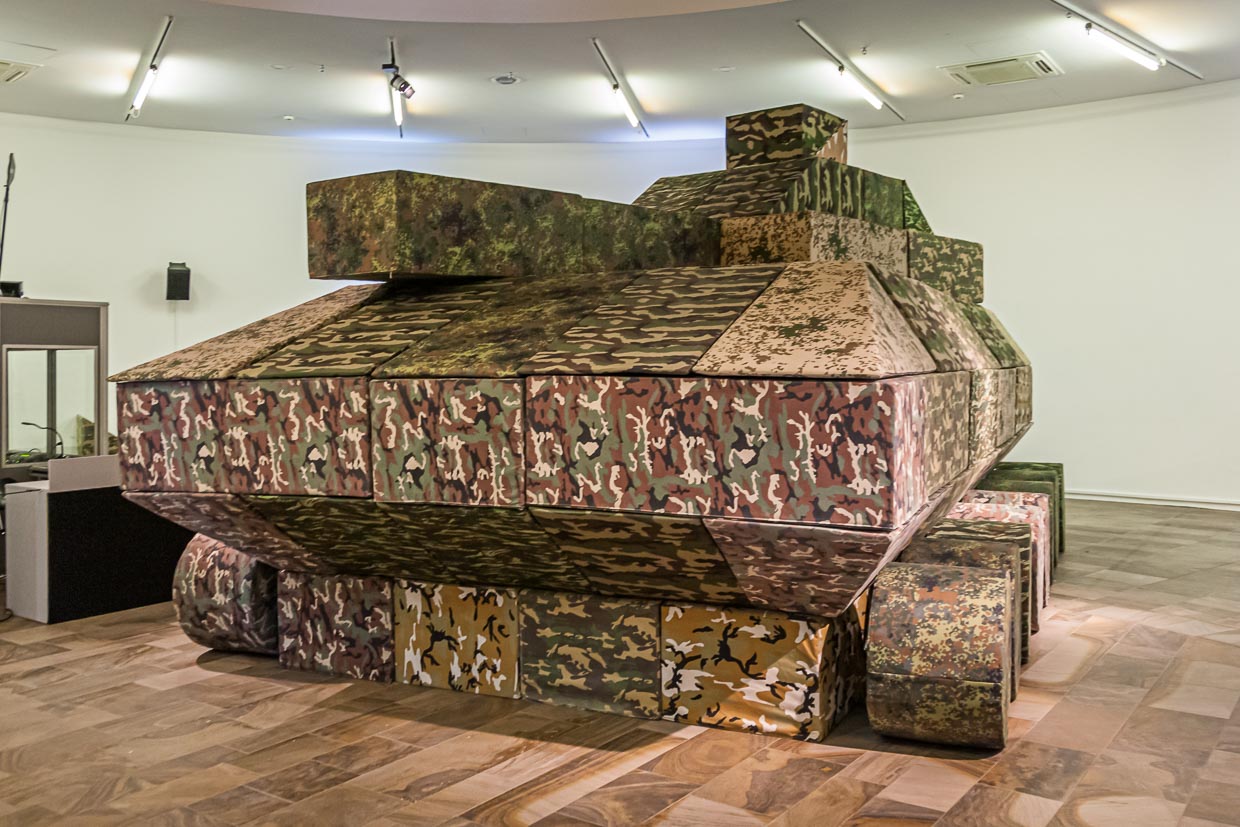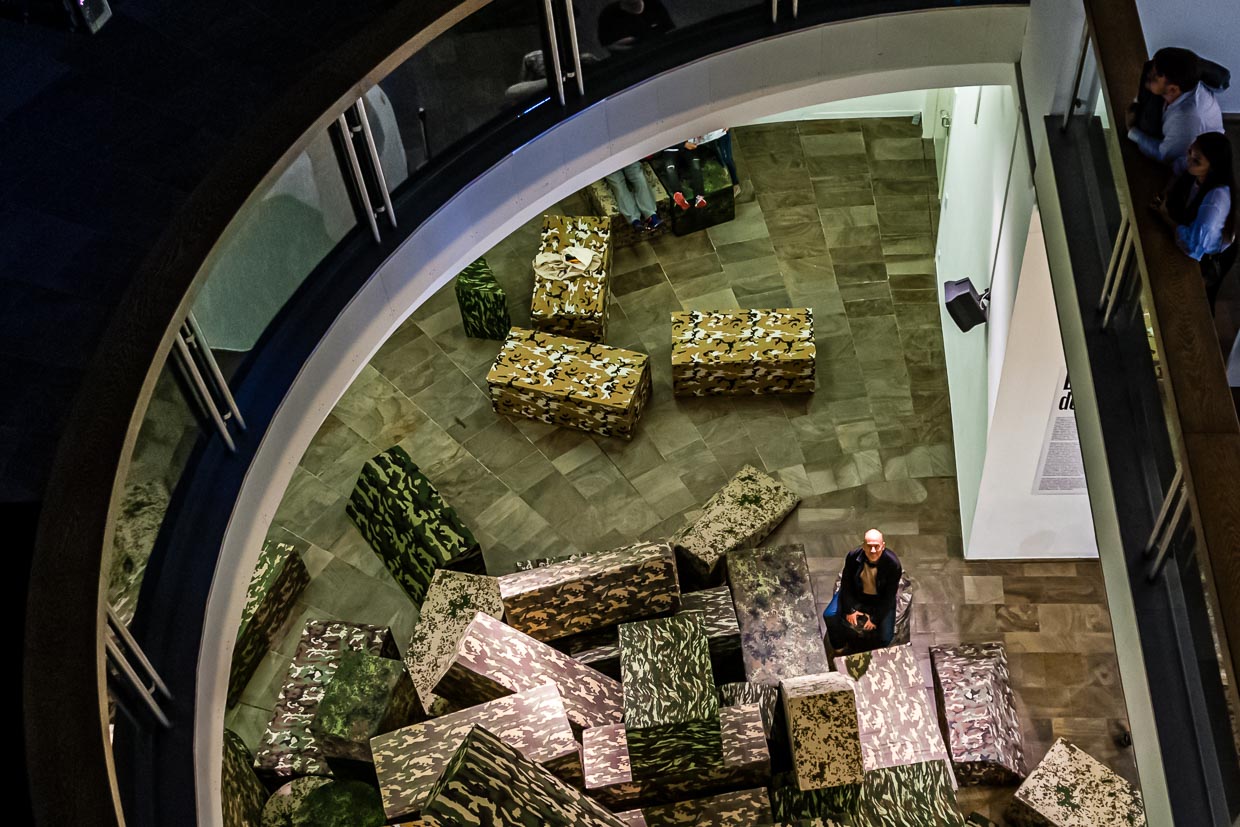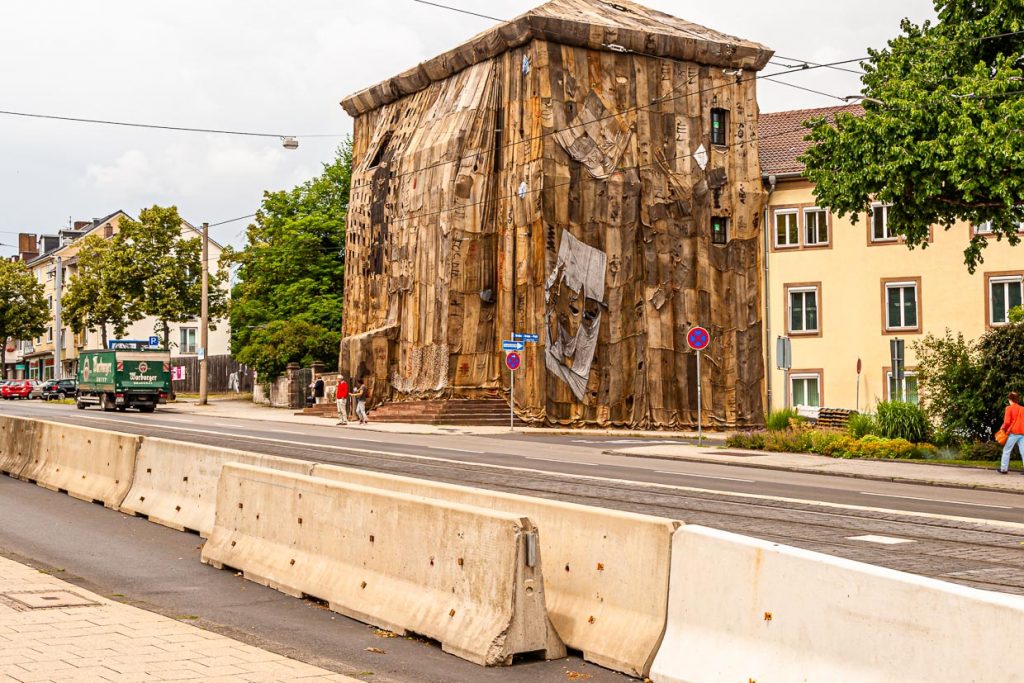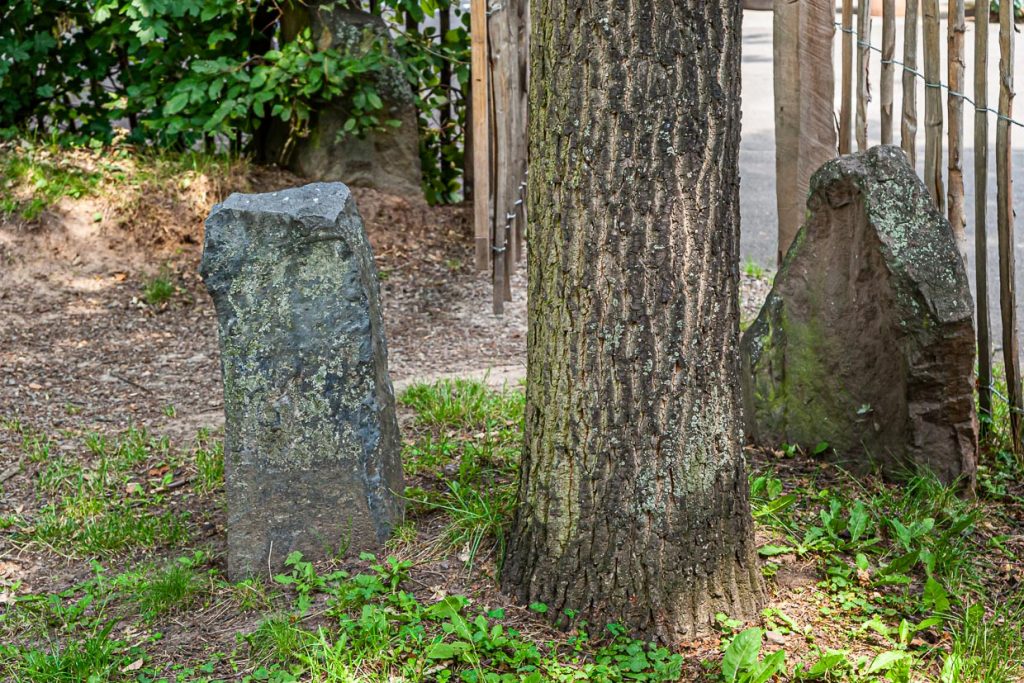In 1955 Arnold Bode, artist, art professor, curator and Kassel resident, launched the first documenta. At the time, it was considered an exhibition of Western European modern art. In the course of 14 exhibitions, in a rotation of five years, documenta has evolved. It has become a place of great debate about contemporary art and the socio-political contexts of the moment. Every five years, for exactly 100 days, Kassel is dedicated to contemporary art. Installations, performances and lectures take place at a wide variety of venues.
Food for thought – war
Time and again, the documenta is also about war. The tank Polemos, which Andreas Angelidakis set up at the Fridericianum during documenta 14, was a reminder of this. At documenta 2017, the artist arranged seating modules made of vinyl and foam into a flexible tank. In a performance, the modules in stain camouflage were assembled into a full-size tank twice a week. The tool of war was repeatedly dismantled to form a cuddly oasis, yet a sense of war and destruction emerged in the viewer. Since February 22, 2022, with Russia’s attack on Ukraine, this Angelidakis’ art performance has become a shattering reality for Europe. Tanks are rolling again and their dismantling to seat modules, that is, the return to diplomacy, as still desired in the performance of Andreas Angelidakis, seems out of reach.


War – always a theme at documenta. Seating modules in stain camouflage are assembled into a full-size tank twice a week in a performance. (Here on the Internet it already works when you move the mouse over the image) / © Photo: Georg Berg
Food for thought – exploitation and environmental destruction
Ibrahim Mahama from Ghana with a spectacular outdoor artwork in 2017. The wrapping of the gate guards. The jute bags are made in Asia, distributed around the world and used in Ghana to pack cocoa for export to America and Europe. In these sacks materializes the history of world trade, which even today often tells of exploitation. Especially cocoa beans stand for lowest wages, child labor and environmental destruction.

Destination Kassel
Kassel is worth a visit and not only at documenta time. During the weeks of the great art show, visitors from all over the world flock to the city in northern Hesse. Concerts, performances and a wide variety of street food enrich the cityscape. But it is also a fact that after more than 60 years of documenta in Kassel, many works of art have remained in the city. The density of museums is also impressive and the water games in Bergpark Wilhelmshöhe, which has been a World Heritage Site since 2013, offer impressive water power every year from May. A city trip to Kassel is also worthwhile outside the documenta years.

Further aspects: Outdoor artworks in Kassel / Curator of documenta 2017 Adam Szymczyk and his concept / Installations and works by: Daniel Knorr, Martha Minujin, Performance Carved Flow by Otobong Nkanga / Yugo-Export by Irena Haiduk / Andreas Angelidaki’s “Polemos” war tool and cuddle oasis.















